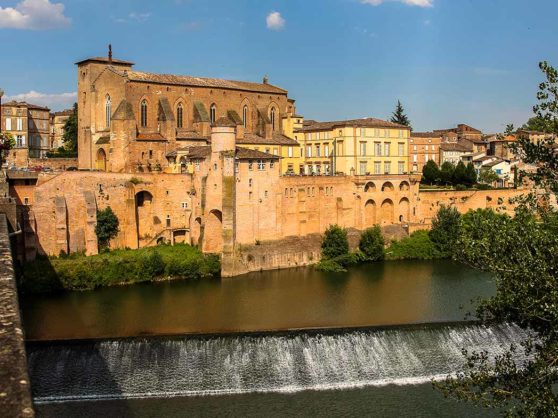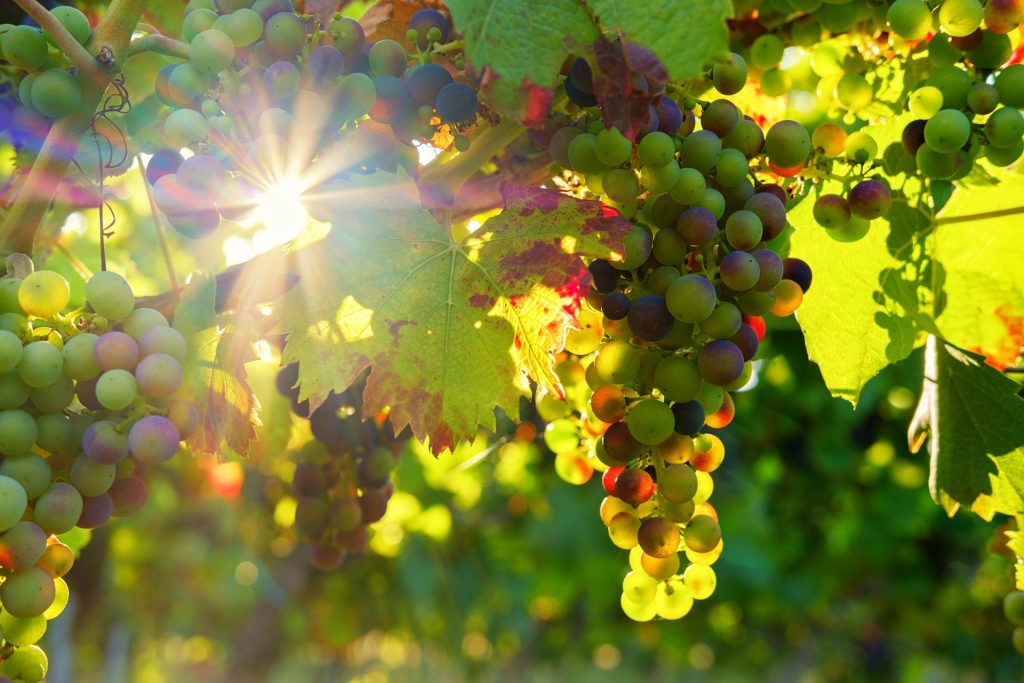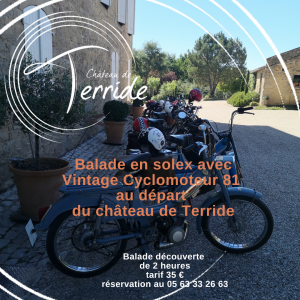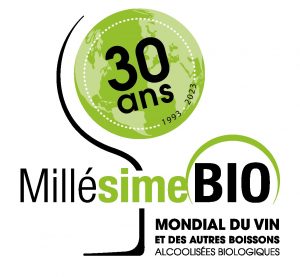

The wines of Gaillac : history of a vineyard
Gaillac is one of the oldest vineyards in France.
The discovery of wine consumption and trade in the Gaillacois territory is attested by archaeological research. Amphorae for storage, vats or containers used to transport wine were discovered. The cultivation of the vine was imported into the Gaillacois by the Romans, following the first conquest of Gaul.
Gaillac wines : the vineyard of Gaillac
Concerning the vineyard, several things can justify that the vine was implanted in the Gaillacois. Indeed, the geographical situation of the vineyard is ideal, because it is at the crossroads of communications. Moreover, the soil of Gaillac is favourable to the culture of the vine.
The important culture of the vine in the region of Gaillac makes turn an economy around it. You can find specialized shops like the pottery sites of Montans, where amphoras are made. The forest of Grésigne and its wood resources allow the production of casks and barrels for the conservation and transport of wine.
The Z’elles gaillacoises
Another factor favored the development of the vineyard: the monks! In 972, Raymond I of Rouergue gave the town of Gaillac to the abbot Saint-Michel who built the eponymousabbey on the banks of the Tarn. At that moment a part of the Tarn vineyard, destroyed by the Moors, was replanted. The Benedictine monks of the Saint-Michel Abbey developed it. Over time, viticulture became a real economic force for the region and thus gained the support of the Counts of Toulouse.
This place of choice will be at the origin of the creation of very strict rules governing viticulture and wine making. Consequently, eight centuries before the creation of the AOC, the Gaillacois vineyard is one of the best protected and organized in France: prohibition to mix wines with “foreign” wines, regulated pruning, ban of the grape harvest, prohibition to smoke the vines, organization of the working time… Moreover only one fertilizer is authorized. This is the “colombine” (pigeon droppings). This is how we can observe a consequent number of pigeon houses in the Gaillacois vineyard. Today, no longer in use, many of them are abandoned and are gradually disappearing.
“It was during a conversation with her colleague Louis de Faramond of Château Lastours that Alix had the idea for the Z’elles Gaillacoises. While they were talking about the challenge of maintaining the vineyard’s built heritage, Louis confided to her his difficulty in finding the funds to restore his dovecote. Classified as a historical monument, the building is absolutely remarkable. A member since its creation in 2014 of SO Femme & Vin, the first professional network of women in wine in the Southwest, the idea of associating vineyards, dovecotes and women then became obvious to her. Very quickly, with the help of Nathalie Vayssette, they contacted the women winemakers of the Gaillacois. The association, in addition to being a place of exchange and mutual aid for the women of wine, has indeed given itself the mission of promoting the wines of Gaillac and the vineyards of the South-West, but also the preservation of the wine heritage. Alix shares her enthusiasm with her colleagues and soon, a collective of about thirty women winemakers from Gaillac is organized, supported by the whole network SO Femme & Vin. A project for a wine tourism event to raise funds is taking shape. The Z’elles Gaillacoises are born: the adventure begins!
The events of the Z’elles Gaillacoises
One weekend in June, under the benevolent eye of the dovecote chosen for the edition, the Z’elles Gaillacoises offer two days of activities to discover the wines of Gaillac, live at the pace of the vineyard and contribute to preserving this remarkable wine heritage that are the dovecotes. The profits collected during the weekend will be donated to the renovation of the pigeon houses.

Grape varieties and soils suitable for the cultivation of Gaillac wines
The Gaillac PDO
From the beginning, the Gaillac winegrower has always been concerned with choosing the grape variety best suited to the terrain and exposure. According to his terroir, his climate and his tradition, the winemaker has chosen typical, specific and high character grape varieties.
After the phylloxera crisis, the vineyard is devastated. Very quickly, the winegrowers replanted their traditional white grape varieties, which allowed them to obtain the controlled appellation in 1936.
As for the reds, the winegrowers replanted productive grape varieties to meet the country’s demand and only obtained the red Gaillac PDO in 1970 after replacing these productive varieties with more indigenous and qualitative ones.
White grape varieties :
Far from the Eye It owes its name to the fact that the long-stalked bunch of grapes places the grape “away from the eye” (an eye in wine language means a bud). This very old grape variety is found only in Gaillac. It produces a wine with a very fine floral aroma in dry white, but also in sweet white.
Mauzac: the traditional grape variety of Gaillac. It is characterized by aromas close to apple and pear. It gives its structure to dry white wine. However, it can be used for the elaboration of soft and obligatory for the Ancestral Method.
Among the white grape varieties, we also find Muscadelle, Semillion, Sauvignon and Ondenc, an indigenous grape variety that is coming back into fashion.
Red grape varieties :
Braucol: It is also called Fer Servadou and gives a structured wine. The dominant aromas are raspberry and blackcurrant and sometimes bell pepper when it lacks maturity. It requires a longer breeding.
Duras: it is one of the oldest grape varieties of the Gaillacois. It is soft and thin at the same time. It is mainly characterized by aromas reminiscent of pepper or spices.
The Prunelard: an old Gaillacois grape variety, brought up to date. He is the father of Malbec and offers structured wines with plum aromas.
Also, in the red grape varieties, we find Gamay, Merlot, Cabernet Sauvignon and Syrah.

Gaillac and its range of wines
AOP Gaillac rouge : Deep color and powerful nose characterize the red Gaillac. The dominant aromas are red fruits and spices. The traditional reds, rather easy-drinking, have a medium ageing period, whereas the top-of-the-range reds, more structured, can easily reach 10 years.
- Garde: 5 to 10 years
- Operating temperature : 16 to 18 degrees Celsius
- To be served with : red meats, cheese, game.
- Recommended bottle of red wine: Ta main sur mon Chemin, Château de Terride
AOC Gaillac Rosé: An acidic wine with fruity aromas and English candy. Its light pink dress enchants the summer tables.
- Keeping: 2 years
- Operating temperature : 8 to 10 degrees Celsius
- Accompaniment : Pizza, salad, goat cheese.
AOC Gaillac Blanc Sec: Often made from a blend of the two local grape varieties. The Mauzac brings its structure while the Loin de l’Oeil brings finesse and minerality.
- Custody : from 2 to 5 years old
- Operating temperature : 8 to 10 degrees Celsius
- Accompaniment : Fish in sauce, shellfish, appetizers, cheese
AOC Gaillac Fraicheur Perlée: It is a fresh and slightly tingling wine. The Gaillac Fraîcheur perlé owes its pearl to the carbonic gas resulting from the alcoholic fermentation. Bottled very early, it keeps all its freshness.
- Custody; from 2 to 5 years
- Serving temperature: 8 to 10 degrees
- To be served with : Shellfish, grilled fish, white meat, aperitif
AOC Gaillac Doux : It is made from Mauzac, Muscadelle and Loin de L’œil. The dominant aromas of sweet Gaillac are pear, candied apple, honey, fig and quince.
- Custody : from 2 to 10 years
- Operating temperature : 8 to 10 degrees Celsius
- Accompaniment : aperitif, foie gras, fruit tarts.
AOP Gaillac Méthode Ancestrale : Its effervescence is due to the fermentation of the grape sugar in the bottle. Made from Mauzac only, it is known for its aromas of pear and fresh apple and its fine bubbles.
- Custody : 2 years
- operating temperature : 8 to 10 degrees Celsius
- Recommended bottle: Ancestral method Château de Terride
- Accompaniment : Aperitif, foie gras, dessert.
Gaillac and its terroirs

The left bank is made of alluvial terraces and its subsoil is deep. The subsoil of the left bank Thanks to the presence of sand, gravel and pebbles, the subsoil is well drained. In conclusion, this terroir gives powerful red wines that are marked by spicy and black fruit aromas.
The right bank occupies the hilly clay-limestone slopes of the right bank of the Tarn, up to the Vère valley. These deep soils contain a water reserve that allows the vines to thrive during the often dry summers. The altitude varies from 140 meters 42 to almost 300 meters 43. The dry whites are supple, elegant and long in the mouth. The sweet white wines are rich and aromatic. But also balanced while the red wines are robust, fruity and spicy.
The Pays Cordais is a hilly plateau with a soil of limestone mother rock perfectly adapted to white wines. It is important to know that the ripening of the white grapes lasts a fortnight longer than in the Tarn valley. The aromas of white wines have floral and fruity notes. The red wines are fruity and spicy with a good vivacity.
The Cunac area includes a few vineyards located in seven villages around Cunac, east of Albi, on a terroir of acidic schist. It is particularly well adapted to Gamay, it is an area that produces mostly red wines primeur.




